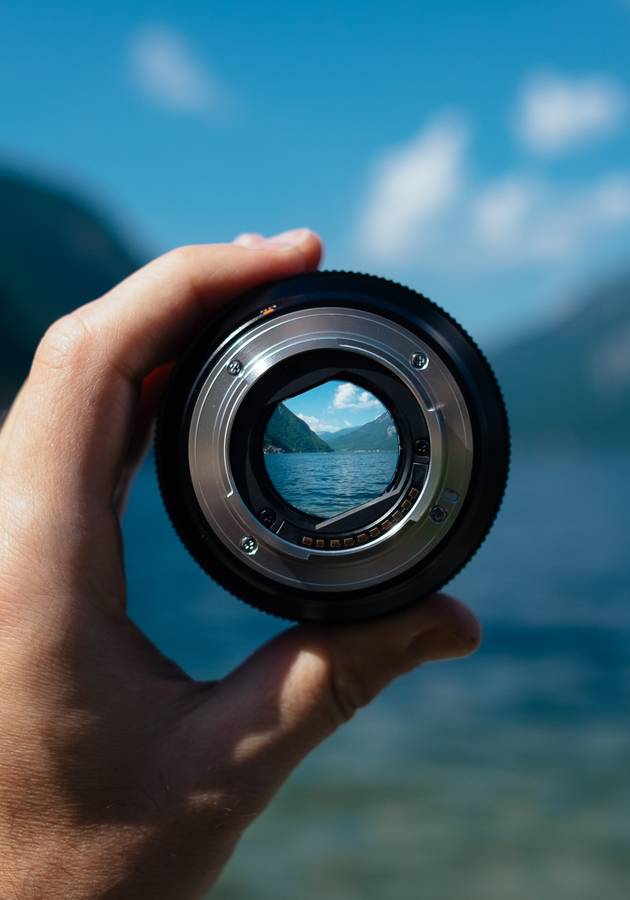Although all creatures display some sleep behavior, very few things are harder to study than sleep. After all, sleep, by definition, is outside conscious awareness. However, thanks to the advances of technology, we now know enough about sleep to at least start asking the right questions about its nature, structure, and objective.
Drawing upon “everything she could lay her hands on,” Kat Duff’s “The Secret Life of Sleep” deals with some of these questions in a signature interdisciplinary approach, encompassing everything from myths and literature to psychology, anthropology, and neuroscience.
So, get ready to learn what happens behind your closed eyes and prepare to uncover the secret life of sleep.
The sleep switch inside your brain
Ancient Greeks believed that the cave of sleep, ruled by the god Hypnos, was surrounded by Lethe, the river of forgetfulness. In their symbolic imagination, to enter the inner sanctum of sleep meant that you needed first to forget yourself completely. “Abandon hope all ye who enter here,” says, according to Dante, the inscription at the entrance of hell. The writing above the cave of sleep – according to ancient Greeks – was saying something along the lines of “Leave all your memories at the door.”
Strangely enough, there might be a “biological equivalent of the River Lethe” buried deep inside our hypothalamus. It is a cluster of so-called ventrolateral preoptic neurons (VLPO neurons for short), which secrets chemicals that effectively shut down wakefulness and awareness while simultaneously inducing sleep. Identified by Harvard sleep researcher Clifford B. Saper and his colleagues back in 2001, the cluster is now colloquially known as “the sleep switch” because it operates just like that: you are either asleep or awake, without much middle ground in between.
And when you are awake, your brain produces and stores a chemical called adenosine triphosphate (ATP) to fuel cell activity. However, the more ATP accumulates over the day, the slower your brain becomes, and the more tired and drowsier you start feeling. When the VLPO neurons are activated, you fall asleep – immediately and completely.
While you’re sleeping, other chemicals slowly accumulate in your body. Once the tipping point is reached, your brain’s sleep switch is activated. Simply put, at certain times during the day, you cannot help but fall asleep and start dreaming or wake up and stay awake. And these times have almost nothing to do with the cycles of day and night: the sleep switch mechanism is an independent homeostatic mechanism.
Between sleep and reality: threshold consciousness
As fast as the sleeping flip-flop toggle occurs inside your brain, there are necessarily transitional states between awareness and sleep. The state of semiconsciousness leading out of sleep – so beautifully described in the opening pages of Marcel Proust’s “Remembrance of Things Past” – is called hypnapompia, from the ancient Greek words for “sleep” and “sending away.” The opposite state – the movement from wakefulness to sleep – is called hypnagogia, which in ancient Greek means “driving into sleep.”
Now, most of the time, both of these states pass so quickly that we barely even notice them. But, sometimes, the neurons in our brain shut down sequentially rather than simultaneously, so we have time to live through the trance-like dance of dreams and reality. Ever since the beginning of time, this surreal experience has been recognized as “a place of insight, inspiration, and telepathy” – predominantly by creatives, but by scientists as well.
For example, 19th-century German chemist August Kekulé supposedly saw the ringed molecular structure of benzene – one of the elementary petrochemicals – in a hypnagogic vision of circling snakes. Aware of the power of hypnagogic states, Thomas Edison took short naps in the middle of the day while sitting in a chair and holding steel balls in his hands – that way, he made sure to wake up almost immediately after falling asleep. Unsurprisingly, Salvador Dalí drew inspiration for his paintings from “the bizarre imagery of sleep states.”
And he might have made the right choice: while between sleep and reality, our brain is exceptional at inventing narratives to explain sensations. For example, it often happens that people in a hypnagogic state startle themselves (and their bedmates) with “a massive, involuntary jerk,” scientifically referred to as myoclonic kick. This is probably because the brain confuses the sudden release of muscle tension that happens during the process of falling asleep with a frightening free fall and reacts accordingly.
The interesting part is that this is commonly accompanied by a split-second dream, which involves anything from falling and tripping to slipping and tumbling. To the sleeper it might seem that the jerk was caused by the dream; however, studies have demonstrated that it is actually the other way around: the dream is concocted by the brain to explain the jerk. The brain can do the same in the hypnopompic state as well: the reason you dream of someone ringing the doorbell when your alarm clock says that it’s time to wake up.
REM and SW: the two basic sleep stages
Sleep is often compared to death. In fact, in ancient Greek mythology, the respective gods – Hypnos and Thanatos – are twin brothers. In Egypt, sleep was considered a sort of daily rehearsal for death. And for the Talmud, sleep is one-sixtieth of death. “There is very little difference between a man in his first sleep, and a man in his last sleep,” wrote once Spain’s greatest novelist, Miguel de Cervantes.
In truth, there is quite a big difference – but we were only able to discern it in the 20th century, with the help of electroencephalogram (EEG) recordings. Contrary to what philosophers and writers across history firmly believed, sleep is not a period during which nothing happens, but “a remarkably active time.” In this manner, it is very different from death and other similar states, such as coma, anesthesia, hypnosis, and hibernation. Just like them, sleeping involves a reduced response to outer stimulation; unlike them, you can wake up quickly from it.
Another thing that makes sleep unique is not being a single, unvarying state of consciousness, but “an ongoing dialogue between deeper and lighter phases, with chemical signatures and brain wave patterns that are as different from each other as they are from waking.” Scientists have identified several phases of sleep, but they all boil down to two basic stages: the rapid eye movement (REM) sleep and slow-wave (SW) sleep.
REM is the busiest stage of sleep, during which, even though your body is “a cold fish,” your brain is “on fire.” And that is barely a metaphor: REM actually heats up the brain, so it must be cooled down by further stages of sleep. During REM, your metabolism is faster, your blood pressure higher, your breathing heavier. Just as well, what you dream is more vivid, more abundant, and easier to remember. It’s almost as if you’re conscious – in the absence of external inputs.
The slow-wave sleep is the exact opposite of REM: it is “a deep, nearly inaccessible slumber that is characterized by slow, high-amplitude, synchronized brain waves.” Because of this, SW sleep is immensely important: it has a restorative function, and it is capable of regenerating tissues, bones, and muscles. During the SW stage, dreams are quite abstract, fragmentary, and vague. It is difficult to awaken someone from slow-wave sleep, and even if you succeed, they will probably remain groggy for some time.
The SW sleep and REM sleep alternate some five to six times during a single night, every 90 minutes on average. However, as we grow older, the amount of SW sleep we get decreases: in fact, 1 in 4 people over the age of 50 experience no SW sleep at all. Interestingly enough, this may be one of the factors that contribute to aging.
Biphasic sleep: our default biological clock?
Consider the following sentence: “Don Quixote followed nature, and being satisfied with his first sleep, did not solicit more. As for Sancho, he never wanted a second, for the first lasted him from night to morning.” Apparently, Cervantes didn’t only differentiate between the first and last sleep, but also between the first and the second sleep.
This sentence is only one of the hundreds of similar sentences compiled about a decade and a half by American historian A. Roger Ekirch, as part of his research of sleep patterns in premodern Europe. Surprisingly, the quote by Cervantes isn’t an exception: whether in Spain or England, whether in ballads, Chaucer or Dickens, you’ll find countless references to the “first sleep,” or “deep sleep,” and the “second sleep” or “morning sleep,” as well as the “watch” between them. In other words, the contemporary pattern of sleep – characterized by a single, 8-hour-long uninterrupted sleep in a quiet, darkened room – might be a recent phenomenon. Even more frighteningly, it might also go against our biological nature.
In an attempt to discover our default circadian rhythm, in the early 1990s, psychiatrist Thomas Alvin Wehr conducted a laboratory experiment in which eight volunteers were placed in an environment in which it was dark for 14 hours a day for the duration of a whole month. By the fourth week, an obvious pattern emerged: all of the subjects, without exception, slept for three to five hours before naturally waking up and spending an hour or two in quiet wakefulness; then, another three-to five-hour sleep period followed.
Thus, long before Ekirch discovered evidence that biphasic sleep was practiced by humans all around Europe before the 19th century, Wehr demonstrated, by accident, that this might be the natural sleep pattern for humans. So, what happened?
Insomnia, the pressure of waking up, and the future of sleep
In one word – industrialization. People valued the “watch” or “vigil” greatly before electricity and capitalism took it away from them. They typically stayed alone with their thoughts, pondering a dream or a morning duty, while smoking a pipe or brewing a tub of ale. Some of them – if we judge by a reference in Chaucer’s “Canterbury Tales,” usually the lower classes – used this middle-of-the-night time to make love.
However, modern lightning brought with it longer working hours and the possibility for a bunch of previously unthought-of nighttime activities. Suddenly, the “watch” lengthened, and people had to wake up for work in the middle of their second sleep.
Of course, this often left them tired for the day, which is why newspapers – usually owned by factory owners – started suggesting their workers skip the “watch”: it was suddenly distasteful and self-indulgent to split your sleep. Interestingly, in retrospect, the appearance of insomnia-related references in literature coincides with the disappearance of accounts of biphasic sleep.
So, our inability to get a night of continuous consolidated sleep might not be a result of anxiety, but the product of societal pressure – referred by Duff as “social jet lag.” In other words, you can’t fall asleep because you know that if you don’t, you’ll be tired the next day – and still be expected to perform. People in the past had the luxury of being much more relaxed about things such as this.
What lies ahead? Will sleep continue to be “commoditized for commercial aims in the name of progress?” Or will new knowledge “help return sleep to its rightful place in our lives and world, and begin to reverse our acceptance of shortened, disrupted sleep as the way of life?” It’s anyone’s guess, really. But in the eyes of Duff, something has to change, because, nowadays, sleep is just like a wild animal in a zoo: alive but struggling to adjust to the constraining conditions.
“We do not have to live this way,” concludes Duff. “We may not be able to turn the tide of history, but we can change the conditions under which we sleep… It is simply a matter of shifting our focus from the demands of our days to the needs – and offerings – of our nights under the covers.”
Final Notes
Though lyrically written and full of surprising facts and, Kat Duff would have probably benefited from less curiosity and more research. Some of the studies cited are neither noteworthy nor reputable, and some embarrassing mistakes should have been caught by even the most indolent fact-checker (such as the description of Michel de Montaigne as an “18th-century French essayist” in the eighth chapter).
But even so, “The Secret Life of Sleep” is infused with Kat Duff’s enthusiasm about her subject and it more than makes up for its dubitable claims – and the few personal anecdotes used in place of arguments – with a powerful and urgent message: sleep is just too important for our health, memory, and inventiveness to be shaped by alarm clocks and the needs of the modern society.
12min Tip
Be a bit more relaxed about sleeping: as Kat Duff says in a February 1st, 2017 interview with Arianna Huffington, “sufficient sleep is not a matter of hours, but of how we feel and perform the next day.” In other words, “if you wake tired and struggle to stay alert the rest of the day without caffeinated drinks, then you probably are not getting enough.” Get more!





























